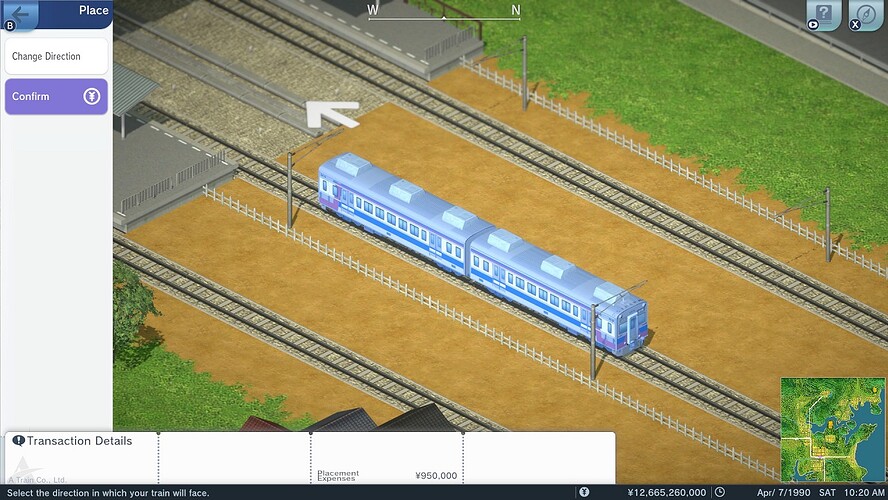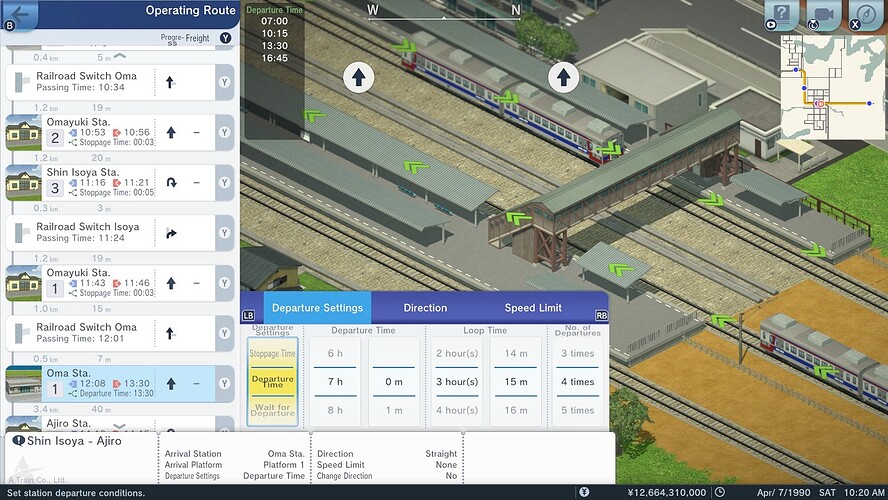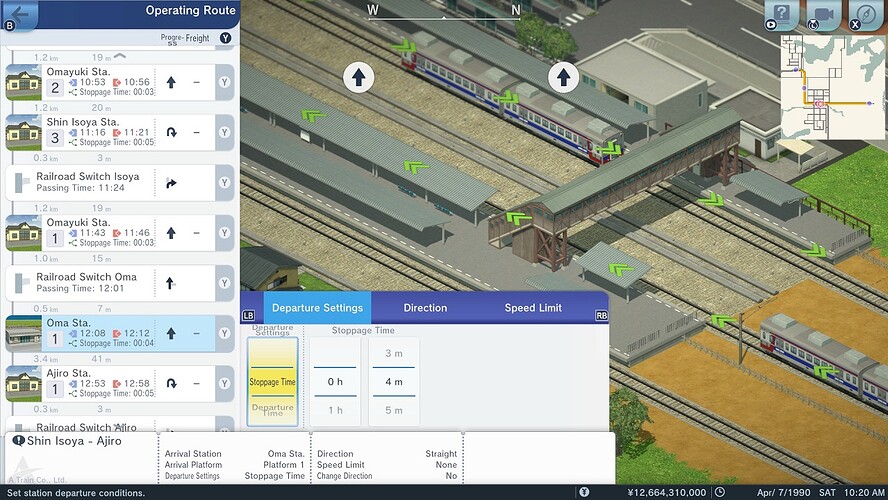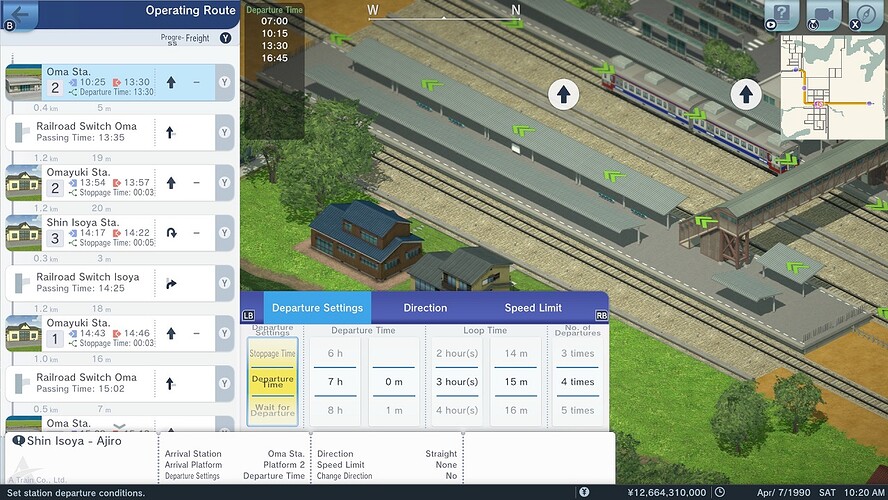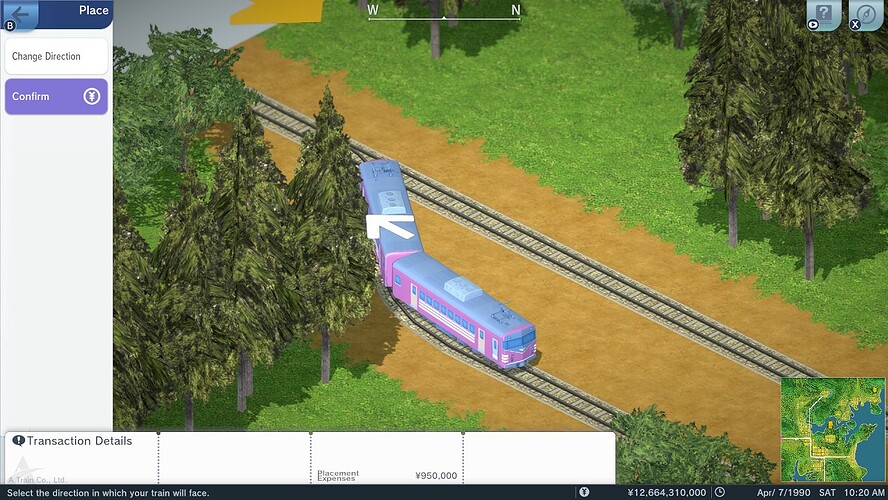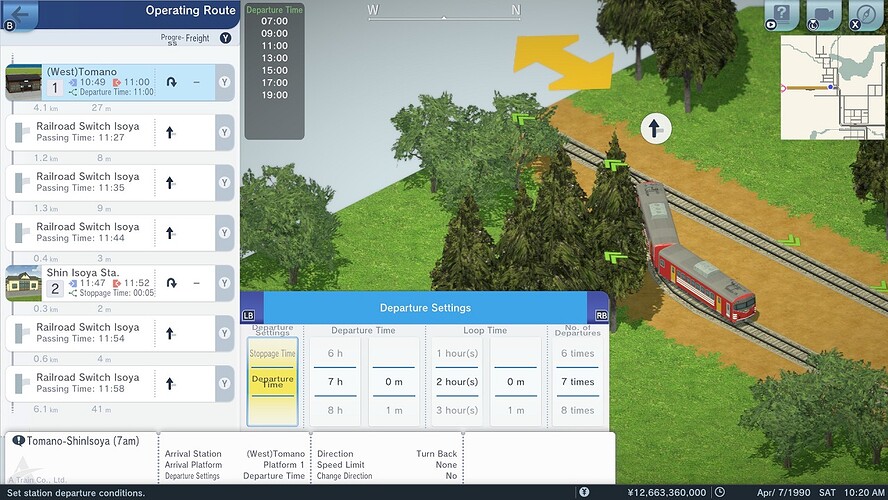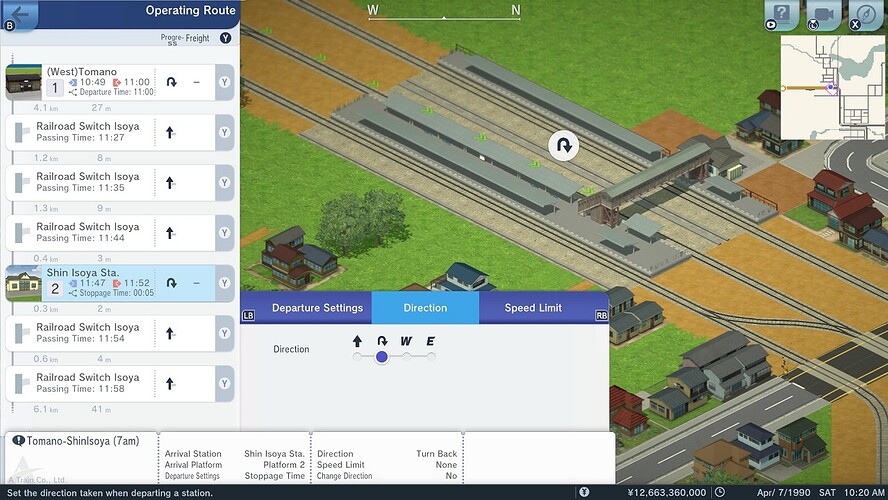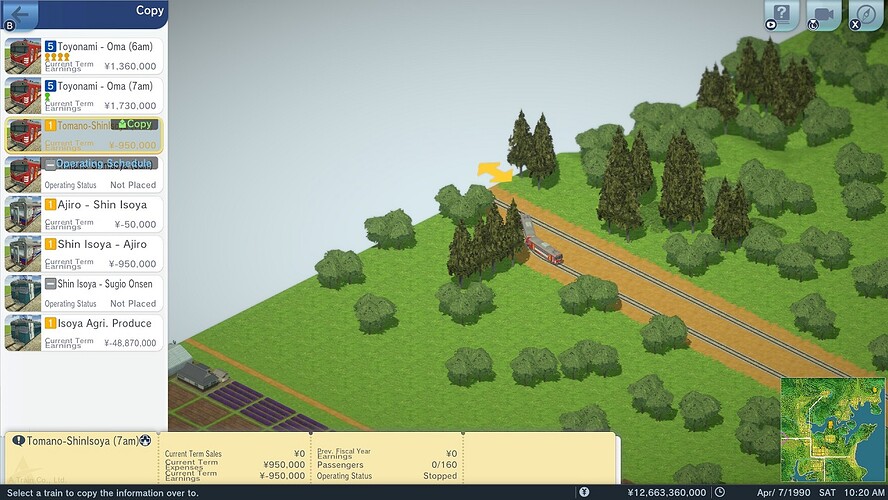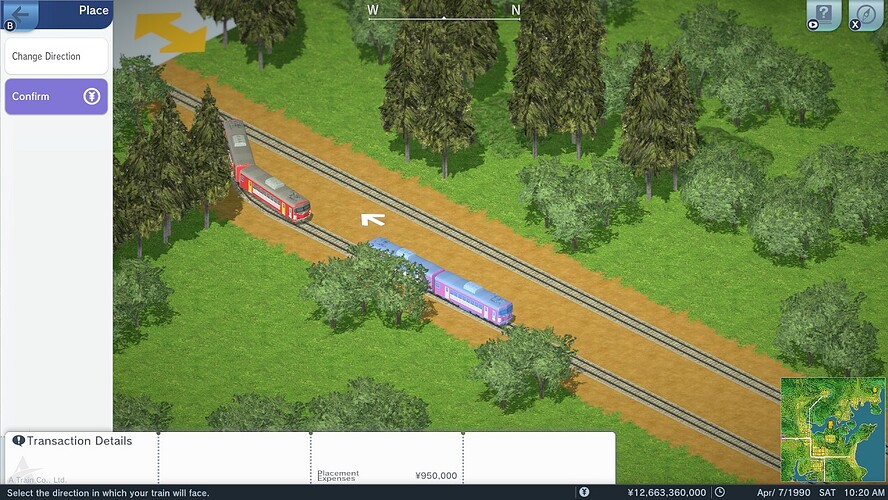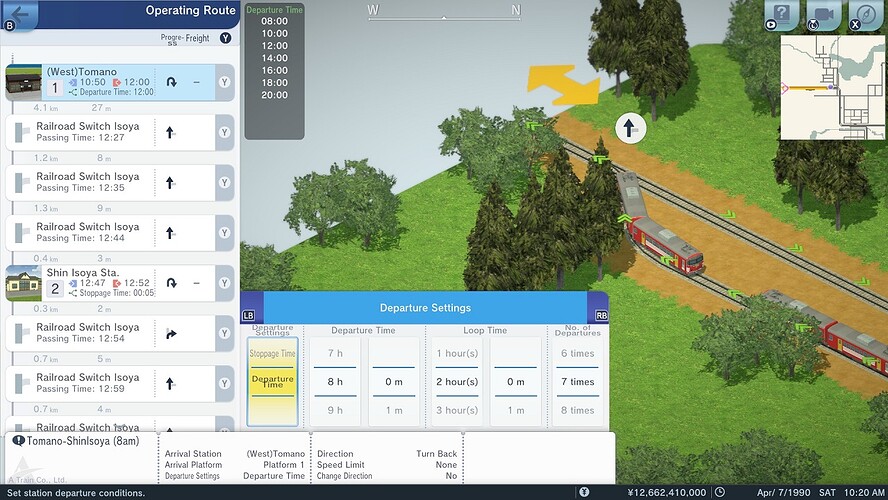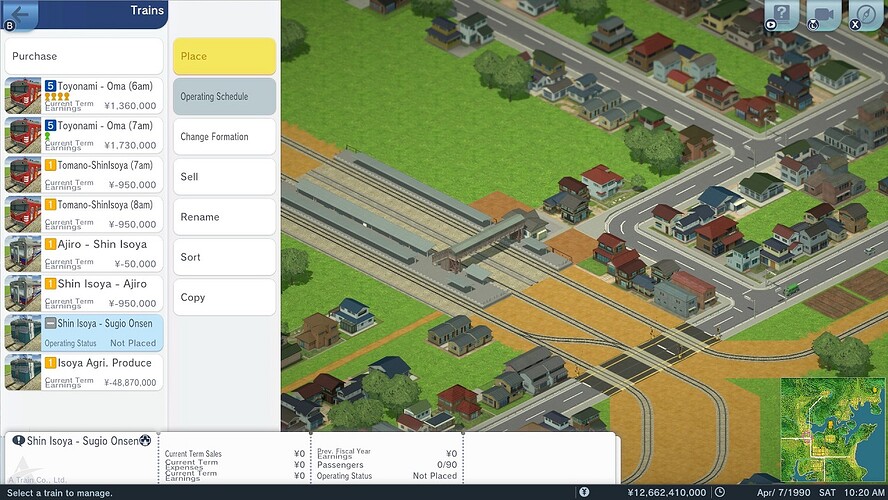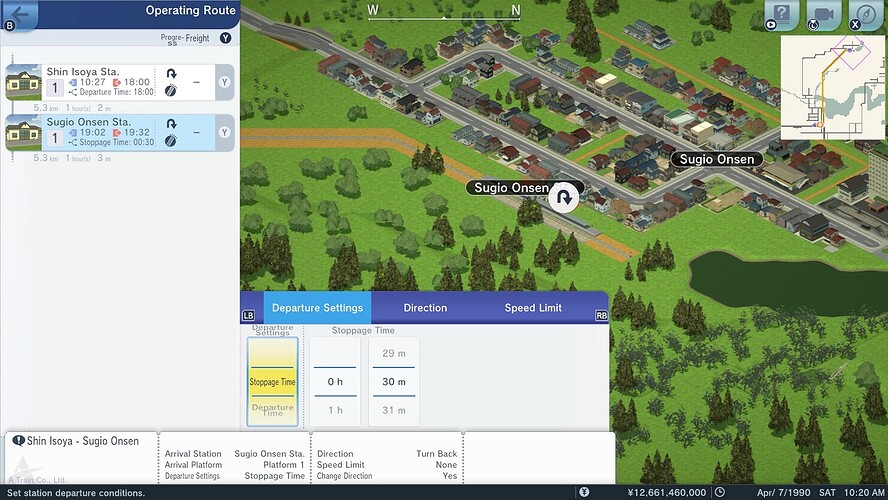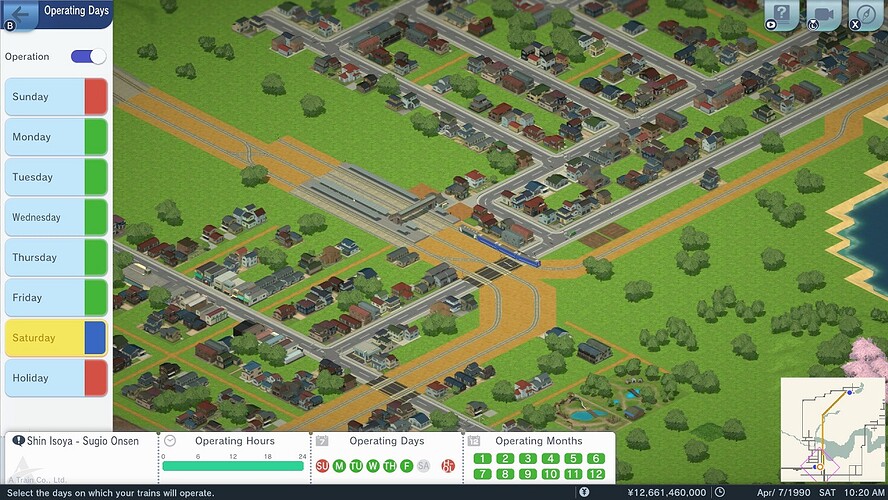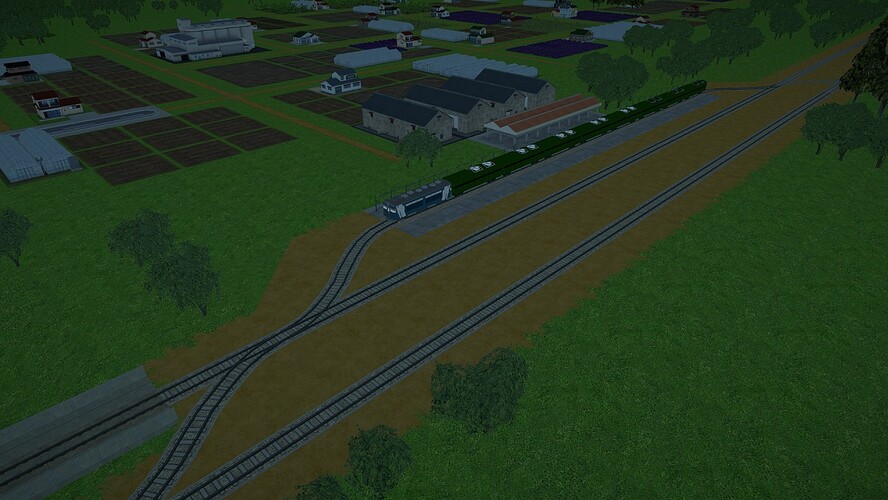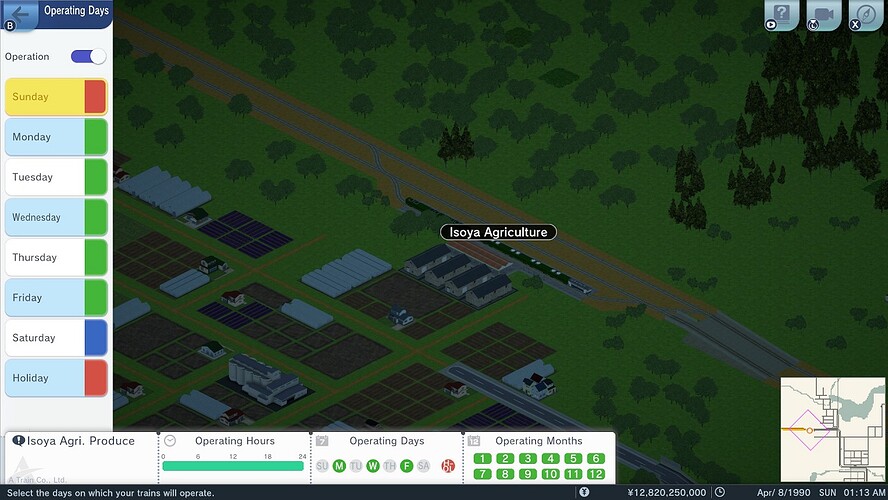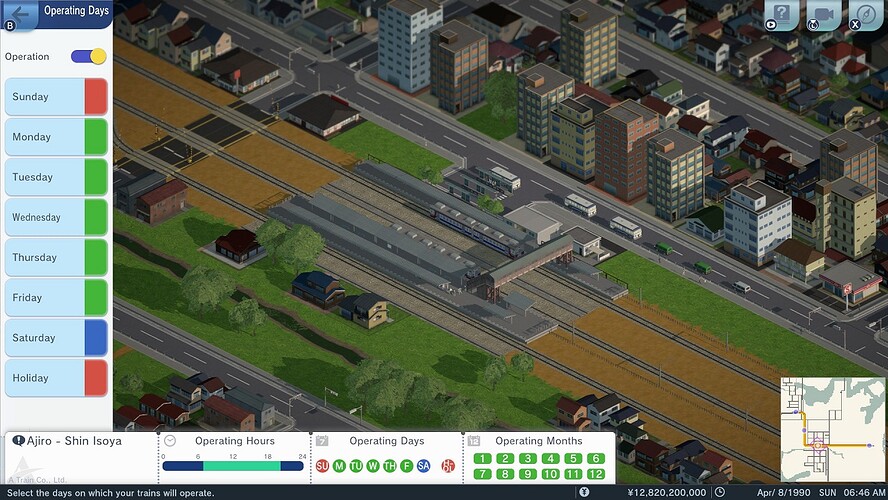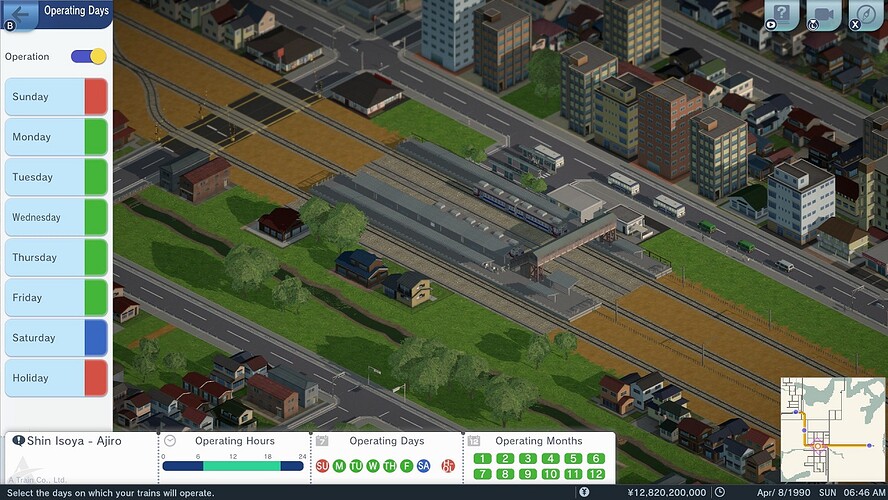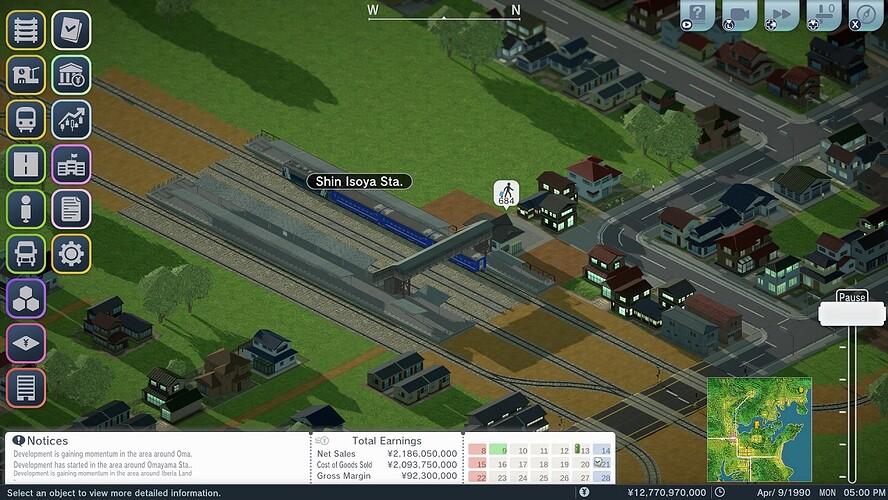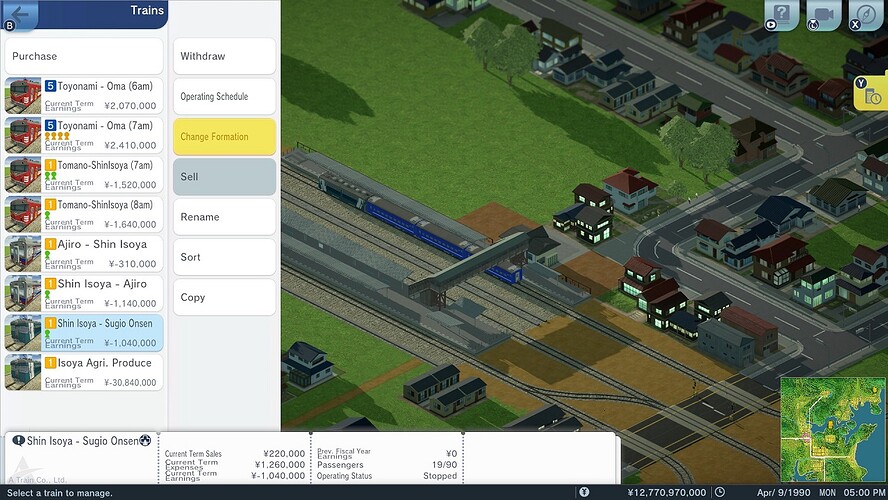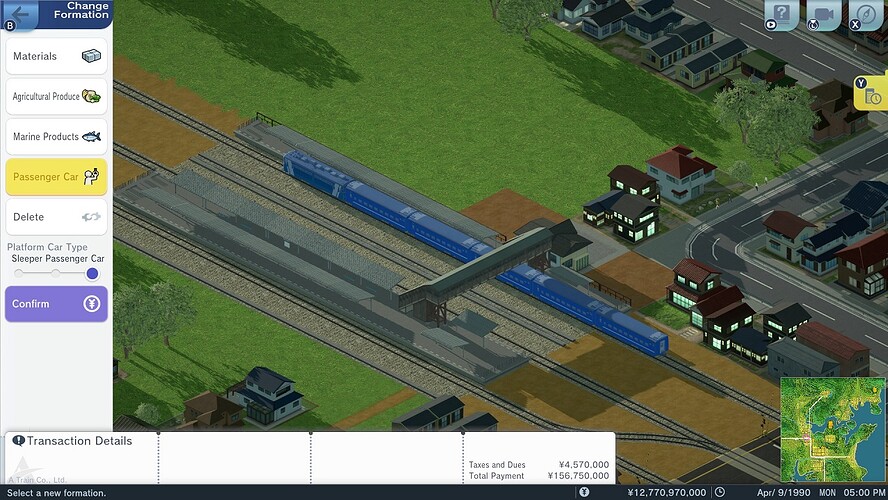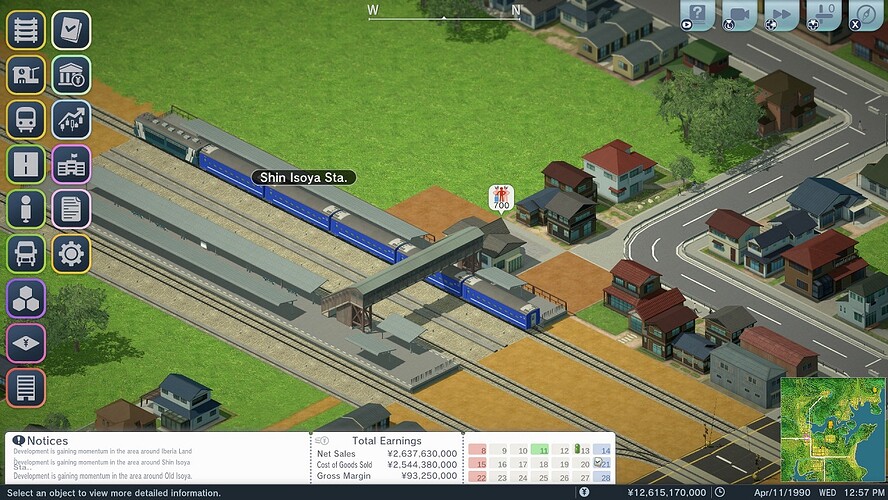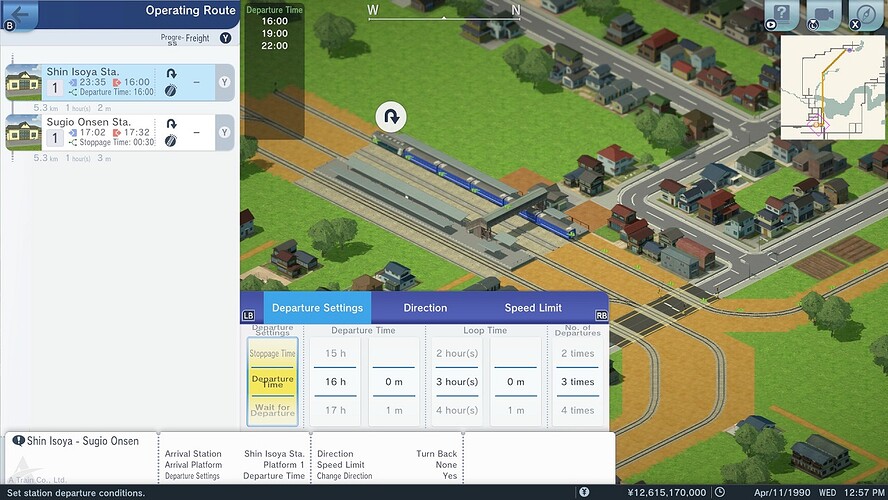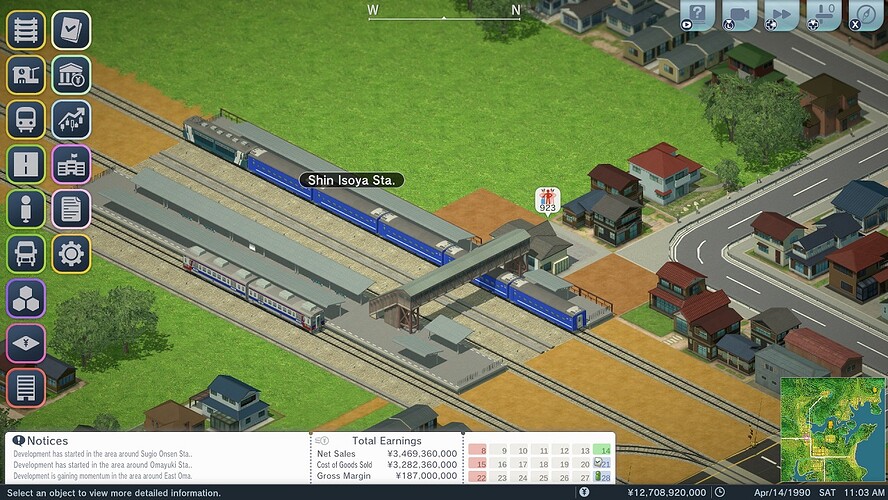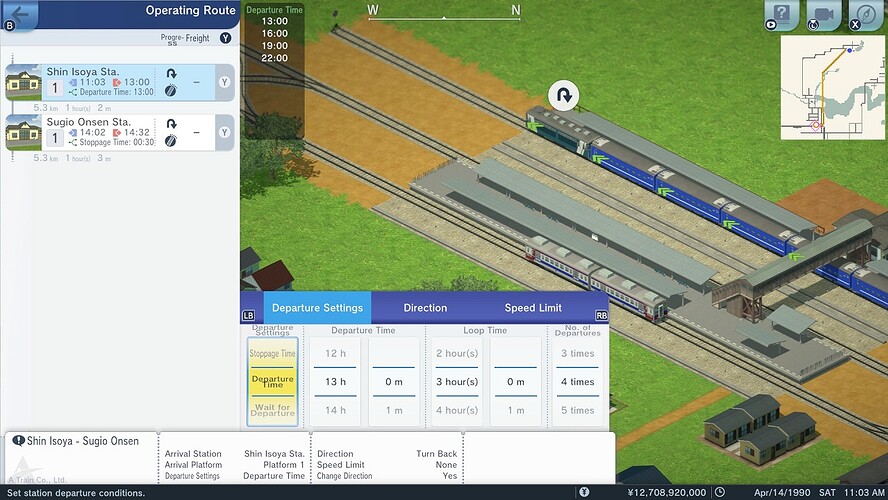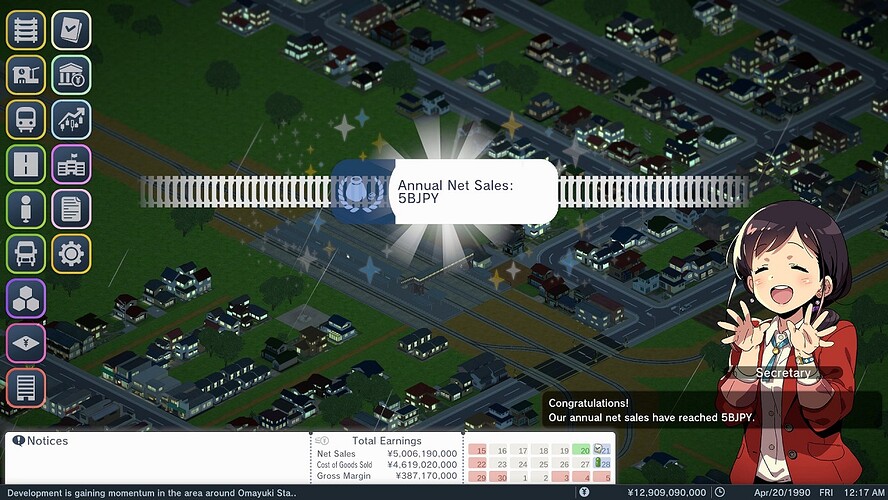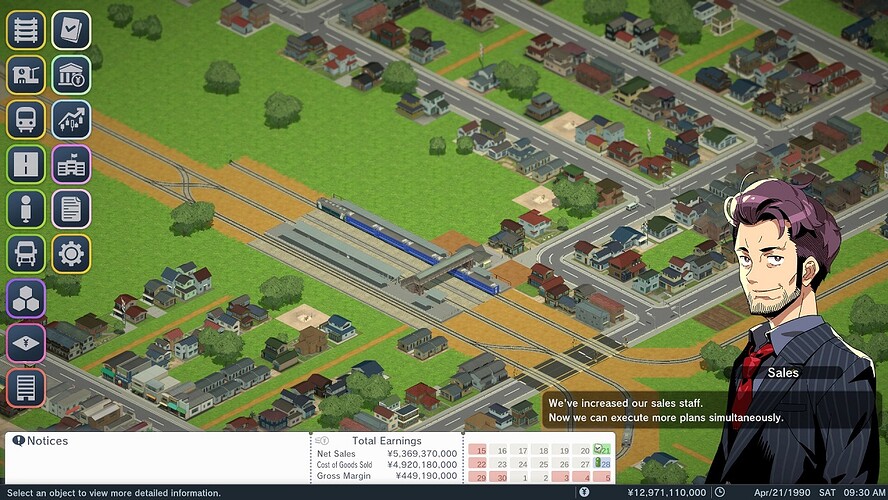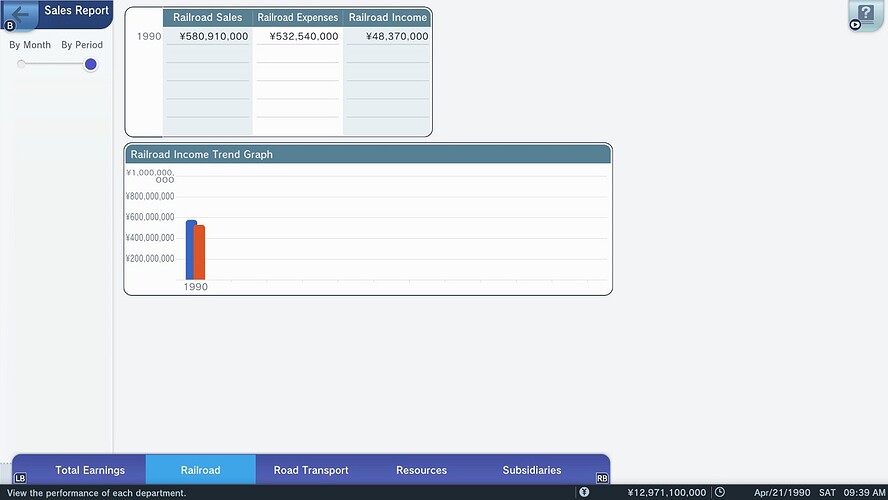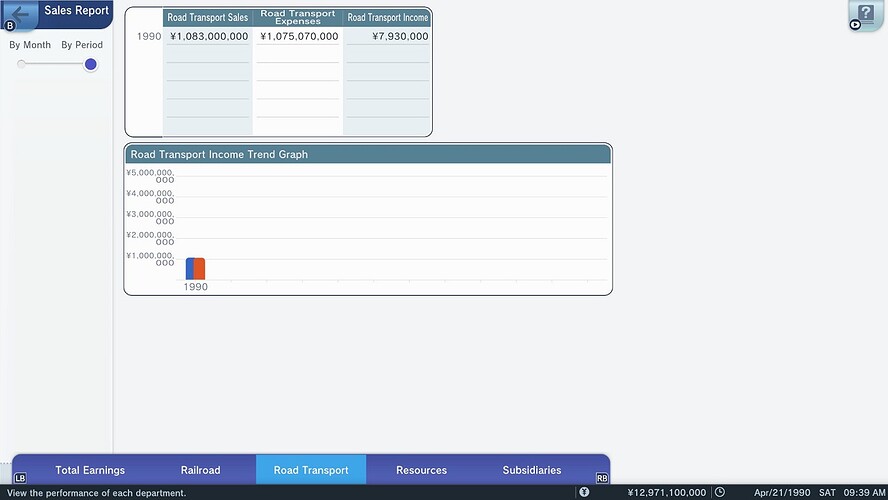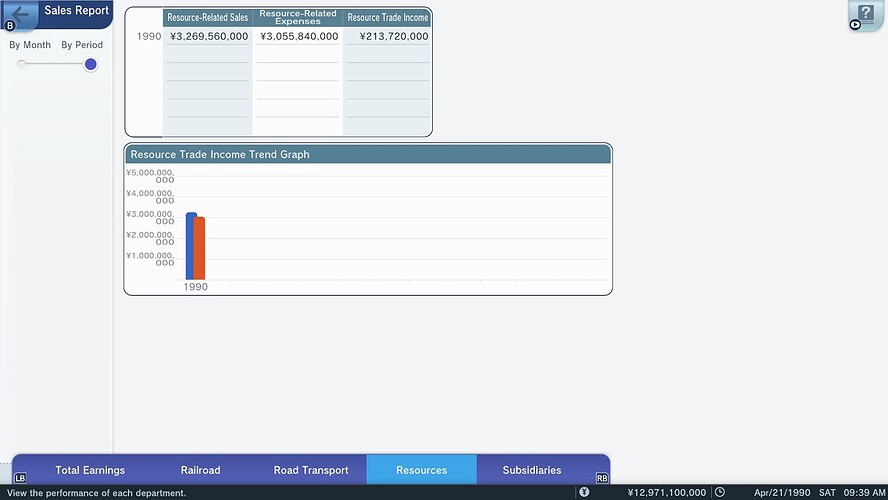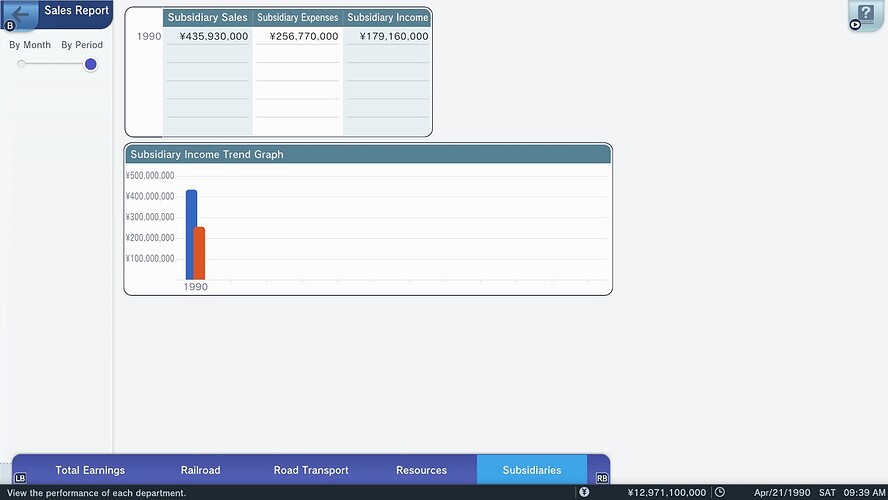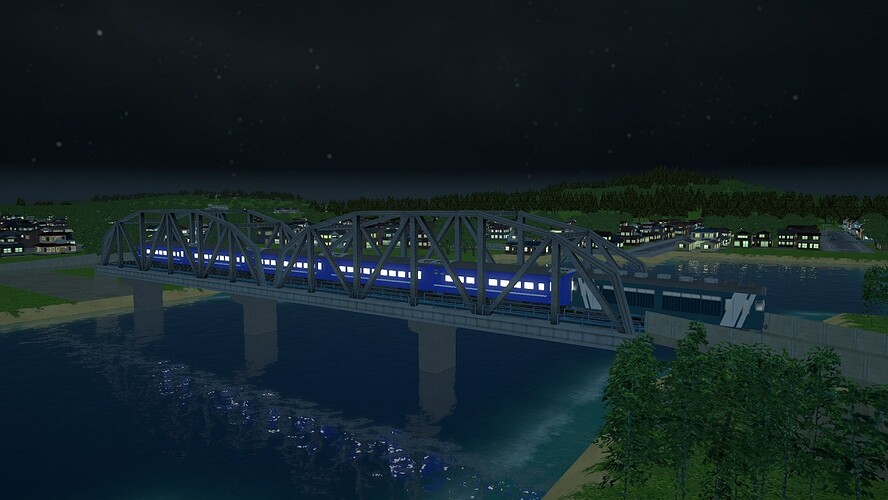Get comfy and bring your snacks because it is going to be a mammoth of an entry today. Words and pictures galore, as we finally set the wheels of our initial business plan in motion. Capped off with financial statements galore at the end.
Today’s scheduled train service leaving for City of Hopes & Dreams is about to depart the station. Please ensure you have finished boarding the train and have your tickets ready for inspection by the conductor!
Let’s Play City of Hopes & Dreams - Setting the wheels in motion!
Click to reveal...
Welcome back to the next entry in our Let’s Play of the City of Hopes and Dreams scenario on the PC edition of A-Train: All Aboard! Tourism. When we last met our business established the ability to fulfil agricultural produce trade contracts with the neighbouring cities of Tomano and Toyonami. Today, with all of our transportation infrastructure finally complete, our goal is to setup the rest of our planned transportation network. Thus, we can look forwards to schedules, schedules, and more schedules as we press into service the remainder of our purchased rolling stock.
We begin today’s adventures in the town of Oma at the nearby combined rail and bus station. Whilst here we will be deploying our second commuter EMU, with the goal of increasing service frequency on our central interurban loop line between Isoya, Oma and Ajiro.
After placing our Commuter Type 2 EMU just outside Oma Station we will progress to setting up the train’s daily operating schedule.
Selecting our aptly named Ajiro - Shin Isoya train, we can use the Copy function to paste the operating schedule onto our newly deployed Shin Isoya - Ajiro train. The Copy function within A-Train: All Aboard! Tourism allows us to select from copying everything across, just the operating schedule, or just the assigned train name. Since all we are interested in is the existing operating schedule we will select to just copy the operating schedule.
After successfully copying the operating schedule across to our Shin Isoya - Ajiro train, we will make some minor adjustments to the operating route settings. Firstly, since this train will be operating in parallel with our other commuter EMU we will want to adjust the settings assigned to Platform #1 of Oma Station.
Consequently, we will flip around the departure settings assigned to Platforms #1 and #2 of Oma Station. Thus, Platform #1’s departure setting changes to the Stoppage Time mode and a duration of four minutes.
Meanwhile, the departure settings for Platform #2 of Oma Station will change from the currentlly assigned Stoppage Time mode to Departure Time mode. We will assign our train a departure time of 7:00am (7h 0m), a loop time of three fours and fifteen minutes (3h 15m), and ask it to depart four times during the day. This will give our parallel Shin Isoya - Ajiro service departure times of 7:00am, 10:15am, 1:30pm, and 4:45pm.
Next we will begin setting up our limited express services between the neighbouring mid-sized city of Tomano and Shin Isoya Station. Thus, we deploy the first of our two two-car consists just near the western map border with Tomano. Once we setup the operating schedule for the aptly named ‘Tomano - Shin Isoya (7am)’ train we will copy it across to our second train, the similarly aptly named ‘Tomano - Shin Isoya (8am)’. Using the Rename function can be a handy tool for helping to organise vehicle lists and quickly convey important information, such as assigned route and departure time.
Trains operating the Tomano to Shin Isoya route will begin service from Tomano Station. Therefore, we will assign a departure settings of 7:00am to our train. The total journey time is forecast to only be one hour and thirty-four minutes, inclusive of a five minute stoppage at Shin Isoya Station. However, the passenger activity expected to utilise the service does not warrant a loop time of less than two hous in our company’s opinion. Thus, each train will have a layover of almost 30 minutes in Tomano before departing again.
Finally, we set the train to complete the loop seven times over the span of the day; giving us a service schedule of 7:00am, 9:00am, 11:00am, 1:00pm, 3:00pm, 5:00pm and 7:00pm for ‘Tomano - Shin Isoya (7am)’.
Next, we head to Shin Isoya station to ensure the Direction settings are correct; thus, creating a loop between Tomano and Shin Isoya. Subsequently, we adjust the Direction setting from ‘Straight Through’ to ‘Turn Back’. After a brief inspection of the whole route, where we make sure the points are set correctly, everything looks good to go and we exit the operating schedule menus.
The Copy function even works upon vehicles that have yet to deployed. Thus, we copy the new operating schedule of ‘Tomano - Shin Isoya (7am)’ across to ‘Tomano - Shin Isoya (8am)’. Consequently, this allows us to only need to make one minor tweak to the operating schedule, adjusting the departure time from Tomano Station from 7:00am to 8:00am.
First, we deploy ‘Tomano - Shin Isoya (8am)’ closer behind its sibling ‘Tomano - Shin Isoya (7am)’.
And then we make the aforementioned minor tweak to the departure setting assigned to Tomano, shifting the departure time back one hour to 8:00am.
Our company is now almost finished with deploying and scheduling it’s initial fleet of vehicles. Now we just have to place the rolling stock for our service between Shin Isoya and Sugio Onsen and give it an appropriate schedule.
Our company chooses to deploy our tourist train between Shin Isoya and Sugio Onsen on the tracks just outside the Shin Isoya station.
Due to the passenger activity expected upon the service between Shin Isoya and Sugio Onsen we choose to run a limited service schedule during the evening and night. Passenger ridership is largely expected to be tourists keen to experience the local hot springs. Thus, we will allow tourist numbers at the Shin Isoya station to build up over the day to ensure good patronage on our train. Consequently, we assign a departure time of 6:00pm to Shin Isoya station, while a loop time of three hours is given to ensure sufficient time at both end of the line for passengers to arrive for boarding, and just two departures each day are ordered.
At the other end of the line at Sugio Onsen Station we will give our train a stoppage time of thirty minutes. Thus, ensuring sufficient time for passengers to arrive for boarding before the train departs for Shin Isoya Station. After briefly inspecting the route, making sure our train is set to ‘Turn Around’ at both stations, the drafted operating schedule is given the all clear to be finalised.
Finally, to minimize wasteful operating costs we will micromanage the train’s Operating Days settings to mothball the service on Saturday. This will be in effect just for today due to the current lack of tourists to patronise the newly opened service. After the conclusion of Saturday, 7th of April, 1990, we will reset Saturdays to be an active service day.
With all of our initial business plans now deployed and operational, we can finally let time progress largely unhindered for a while. It is now time to sit back and observe!
The first modification our company will make, after finally emptying our warehouses of agricultural produce is to modify the operating days of our agricultural produce freight train. The Agricultural Cooperative currently only produces eight units of produce each day and while our freight train can carry up to sixteen units of produce. Thus, we will change our train’s operating days to be roughly once every two days.
With each week being seven days in length, a “once every two days” schedule understandably doesn’t quite line up perfectly. Subsequently, we will order our Isoya-based agricultural produce freight train to not operate on Sundays as well. This will subsequently allow our warehouses to slowly rebuild their long-term stocks of agricultural produce each Sunday, ahead of likely production declines later in the year due to changes in seasons.
Before 7:00am of Sunday, the 8th of April, 1990, we adjust the operation status of our two commuter trains, ‘Ajiro - Shin Isoya’ and ‘Shin Isoya - Ajiro’. Now that tourists are expected to flood into the region and transit between the Oma and Shin Isoya stations, the time is ripe for these two services to become operational.
With the number of tourists bound for Sugio Onsen far exceeding expectations, even after just a single day of operation, our company steps in to adjust the original business plans.
After some careful deliberation our company’s management decides to expand the capacity of the train by ordering two additional sleeper cars to increase the service’s passenger capacity. Alternatively, our company could have increase the service’s frequency by increasing the number of daily departures. However, we considering expansion of the service’s passenger capacity per trip to be the best option for the time being due to the primarily tourist-based ridership of the service.
With demand for the service to Sugio Onsen still skyrocketing, to critical levels, our company steps in again to expand the number of passengers the service can handle daily.
This time our company opts to amend the operating schedule of the service so that it now departs at 4:00pm and completes three trips each day. This will immediately boost the total capacity of the service to a maximum of 450 tourists a day.
With demand still continuing to steadily outstrip supply, our company once again decides to increase the frequency of the tourist service to Sugio Onsen. Thus, three days later the departure settings are once again been modified. This time, in response to demand, the operation schedule is modified so that departures commence from 1:00pm and occur four times throughout the day. Additionally, we consider remodelling Shin Isoya station to improve facilities at the station, so that it can handle a greater amount of waiting tourists before overcrowding becomes an annoyance to them.
Just after midnight, in the very early hours of Friday, the 20th of April, 1990, we receive word from our secretary that our company’s annual net sales have already surpassed five billion Japanese Yen.
The next notification we receive comes from our the head of our Sales department, who informs us that our planned expansion of the sales team has been completed. Subsequently, our company can now undertake two plans in parallel. Which should come in very handy soon!
Before we end today’s entry of our Let’s Play of the City of Hopes and Dreams scenario, let us consult our sales and financial reports.
Looking at our total earnings, we can see that our company is already bringing in more than it spends. This applies across all four income categories the total figure can be broken down into, with resource trade income leading the way at 213,720,000 Japanese Yen.
For those interested in the numbers, a individual breakdown for each of the four categories have been provided above. As can be clearly seen via the provided graphs, our greatest net margin currently comes from our subsidiaries. However, despite having a poorer net margin, resource-related sales currently leads the way in terms of income generated so far this financial year.
Finally, the statement that everyone has been waiting for, the income statement! Compared to our last income statement, from the previous Let’s Play entry, we can clearly see that we have already reduced our net losses by almost 500,000,000 Japanese Yen. As a result, within the space of just two weeks our current net losses have been reduced from 2,537,480,000 Japanese Yen to 2,089,780,000 Japanese Yen. This bodes well for our fledgling business venture and our company forecasts that we should be on track to make a net profit by the time the close of the financial year arrives.
Alas, that is all for today… From the ever-growing team of staff at A Train Co., Ltd., we dearly hope you can join us next time as we continue our business journey through the City of Hopes and Dreams scenario. What awaits us next time? You will just have to find out and see, we are sure it will be packed full of interesting developments.
Before we go though, we hope you enjoy this scenic snapshot of our sleeper train crossing the local bay on its journey from Shin Isoya to Sugio Onsen. Sayonara!

